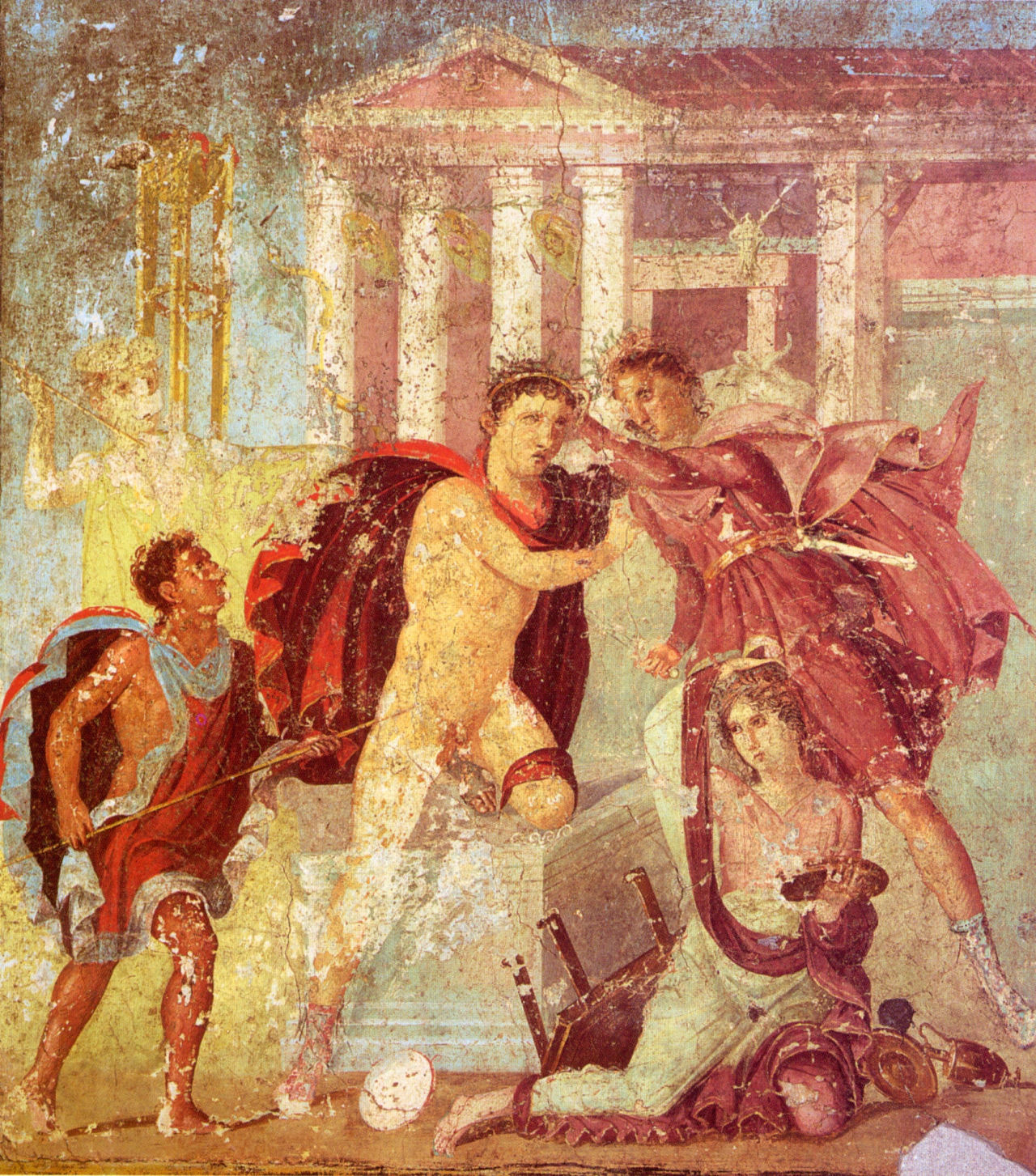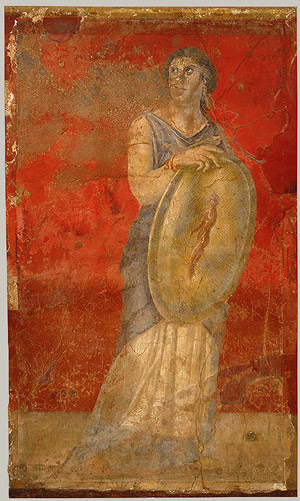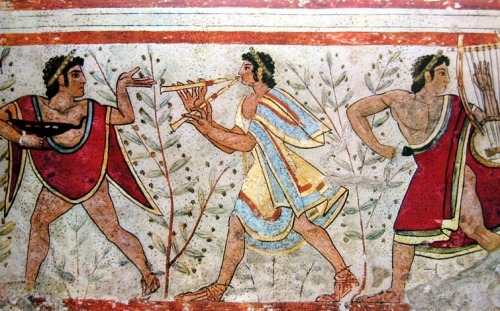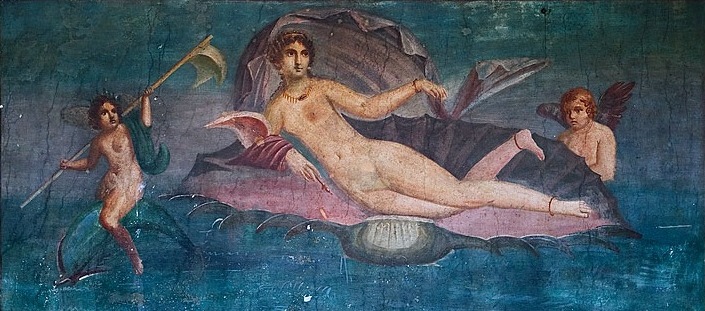This is something that I've never quite understood. What was the basis and origin of Roman painted artwork, in murals and frescos? Was it largely based on the painting traditions of the older Etruscan culture or Archaic/Classic/Hellenistic era Greek culture? It seems that Etruscan art was heavily influenced by the Greeks by the 6th century BC, but the Etruscans had artwork predating 600 BC. For that matter "Archaic" period Greek art didn't even exist before the 8th century BC (lasting until 480 BC with the beginning of the Classical period).
Although we have a multitude of vase paintings from Classical era Greece, plus marble and bronze statues and a good amount of tiled floor mosaics, murals and frescos are much rarer than later Roman ones. There's not much to work with, unfortunately. For an example of painted frescos at the end of the Classical period in Greece, here are some from the Macedonian tomb of Agios Athanasios, dated to the late 4th century BC.

MORE:
We also have significantly older ones, like the Greek frescos from the Tomb of the Diver, dated c. 470 BC, from Paestum, Italy (then part of Magna Graecia in Hellenic southern Italy):
The style here seems quite similar to the Etruscans of the same period. For instance, the Tomb of the Triclinium, also dated c. 470 BC, shows lively scenes of Etruscans dancing to music:
However, Etruscan painting styles seem to then mimic (or perhaps develop their own tradition of) the more realistic poses found in late Classical Greek paintings by the middle of the 4th century BC, such as in the Tomb of the Shields in Tarquinia, Italy, dated roughly 350-340 BC:
Below we can see the general state of Roman painted artwork by the 1st century AD, which still looks very similar to Greek artwork of the early Hellenistic period. Even the color schemes for clothing and facial expressions seem very similar, at least to me. Much older Etruscan art seemed far more rigid and their perspectives were almost always of profile shots of people's faces, not with bodies twisting and turning in this far more realistic Classical Greek fashion.

The Lion of Chaeronea Orestes kills Neoptolemus at the altar of Apollo in the shrine of Delphi, as depicted in Euripides’ Andromache. Fresco from the west wall of the winter triclinium in the House of Marcus Lucretius Fronto, Pompeii.
In addition to Romans copying Classical Greek marble statues, we also know that the Romans reproduced Classical Greek paintings as well. For instance, there was a famous painting of Venus Anadyomene by Apelles (fl. 332 -329 BC) of Ionia imported to Rome by Augustus, now lost, but copied in this Roman mural from Pompeii:
Apeelles was also the alleged artist of two paintings depicting Alexander the Great that were later reproduced in Roman works, the first one here from the 1st century BC (House of the Vettii) showing Alexander as Zeus, the second one a Roman mosaic from Pompeii showing Alexander at the Battle of Issus:
So was Roman artwork, as far as murals and frescos are concerned, more a continuation of the Etruscan tradition or the Greek ones? Of course the Romans developed styles all their own by the period of the late Republic, 2nd and 1st centuries BC. Is it fair to say that early Roman art (and that of other Latin peoples) was largely similar to the Etruscans and by the time of the Punic Wars onwards Hellenistic artistic influences became far more predominant?
This site provides an interesting timeline, with the so-called "First Style" of Roman painting on stucco walls beginning c. 200 - 60 BC, or roughly at the end of the Second Punic War. The "Second Style" on plaster walls and with much greater detail in shading and perspective is described as being established around the early 1st century BC. Both of these Roman styles are noted as being influenced and inspired by Hellenistic art, both older and contemporary artwork. Unfortunately this website does not provide any description of Roman painted art prior to the period of the Second Punic War and makes no mention of the Etruscans at all. It does, however, go on to explain the "Third Style" of Roman painting straddling the 1st centuries BC and AD, as well as the Fourth Style of the mid 1st century AD.
The Boscoreale frescos of the mid 1st century BC provide excellent examples of the Second Style during the late Republic, when the Hellenistic period was coming to an end:

































 Reply With Quote
Reply With Quote

















